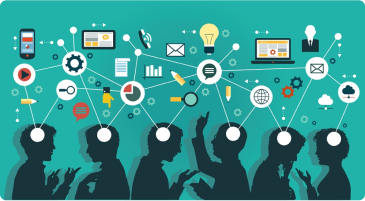
Welcome to the forefront of educational innovation! As aspiring educators at a B.Ed college, you are preparing to enter a dynamic field where traditional teaching methods are continually evolving to meet the needs of 21st-century learners. This blog explores innovative teaching methods that are transforming education, fostering student engagement, and promoting lifelong learning. From technology integration to collaborative learning, we delve into strategies that prepare you to inspire and empower your future students.
The flipped classroom model inverts the traditional teaching paradigm by delivering instructional content outside the classroom and dedicating in-class time to interactive, hands-on activities. Students engage with video lectures, readings, or online modules at home, allowing classroom time to be used for discussions, problem-solving, and collaborative projects.
Encourages active learning and critical thinking.
Provides opportunities for personalized instruction.
Enhances student engagement and participation.
Curate or create engaging multimedia content for students to review at home.
Design in-class activities that promote deep understanding and application of concepts.
Utilize formative assessments to gauge student comprehension and guide instruction.
Project-Based Learning (PBL) centers on students working on extended projects that require critical thinking, creativity, and collaboration. These projects are often interdisciplinary and connect academic content with real-world challenges, making learning more meaningful and relevant.
Fosters problem-solving and innovation.
Develops collaboration and communication skills.
Connects classroom learning to real-life applications.
Choose projects that align with curricular goals and student interests.
Provide clear guidelines and support throughout the project.
Incorporate opportunities for reflection and feedback.
Gamification incorporates game elements into educational activities to increase motivation and engagement. Techniques such as point systems, leaderboards, badges, and challenges transform learning into an interactive and enjoyable experience.
Enhances student motivation and enthusiasm for learning.
Encourages persistence and resilience through challenges.
Provides immediate feedback and a sense of accomplishment.
Identify key learning objectives and design game elements that reinforce them.
Ensure that gamified activities are inclusive and accessible to all students.
Balance competition with collaboration to foster a positive learning environment.
Collaborative learning emphasizes working together to achieve common goals, leveraging the collective knowledge and skills of the group. This approach promotes the development of interpersonal skills, teamwork, and a sense of community within the classroom.
Encourages peer learning and knowledge sharing.
Develops communication and conflict resolution skills.
Builds a supportive and inclusive classroom culture.
Design group activities that require cooperation and interdependence.
Establish clear roles and responsibilities within groups.
Facilitate reflective discussions on group dynamics and outcomes.
Inquiry-Based Learning (IBL) positions students as active participants in their learning journey, driven by curiosity and questioning. This method involves exploring questions, problems, or scenarios and conducting investigations to construct knowledge and understanding.
Promotes critical thinking and analytical skills.
Encourages intellectual curiosity and independent learning.
Provides opportunities for authentic, student-centered learning.
Frame learning around open-ended questions or problems.
Guide students through the inquiry process with scaffolding and support.
Encourage reflection and discussion to deepen understanding.
The integration of technology in education opens new avenues for teaching and learning. From interactive whiteboards and learning management systems to educational apps and virtual reality, technology enhances engagement, accessibility, and differentiation.
Supports diverse learning styles and needs.
Facilitates access to a wealth of digital resources and tools.
Prepares students for a technology-driven world
Select technology tools that align with instructional goals and enhance learning outcomes.
Provide training and support for effective technology use.
Ensure equitable access to technology for all students.
Supporting the Whole Student Incorporating mindfulness and social-emotional learning (SEL) practices into the classroom addresses the holistic development of students. These practices foster emotional regulation, resilience, and a positive learning environment.
Enhances emotional well-being and mental health.
Improves focus, attention, and academic performance. Builds empathy, compassion, and positive relationships.
Integrate mindfulness activities such as breathing exercises and meditation into the daily routine.
Teach SEL skills through explicit instruction and modeling.
Create a classroom environment that supports emotional safety and well-being.
As you prepare to enter the teaching profession, embracing innovative teaching methods will equip you to meet the diverse needs of your students and create engaging, meaningful learning experiences. By leveraging the power of flipped classrooms, project-based learning, gamification, collaborative learning, inquiry-based learning, technology integration, and mindfulness, you will be at the forefront of modern education. These methods not only enhance academic achievement but also foster the development of critical skills and dispositions essential for success in the 21st century. Embrace these innovations, and inspire your students to become lifelong learners and active contributors to a dynamic and ever-changing world.